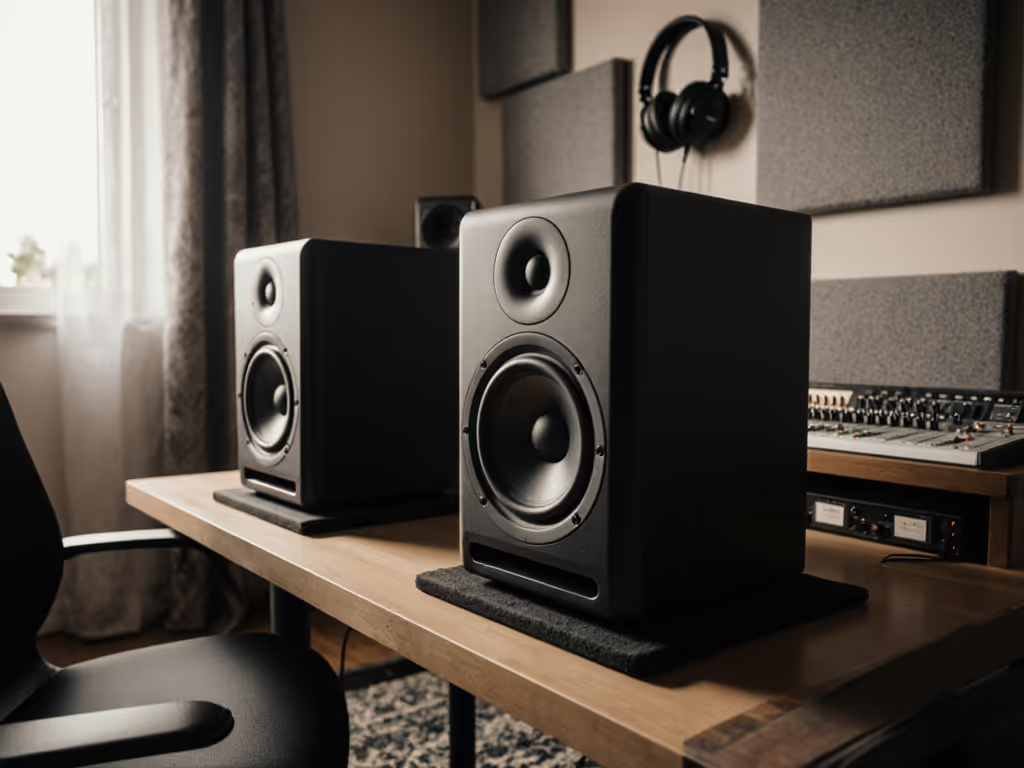
Studio Monitor Safe Levels: Mix Accuracy Meets Hearing Care
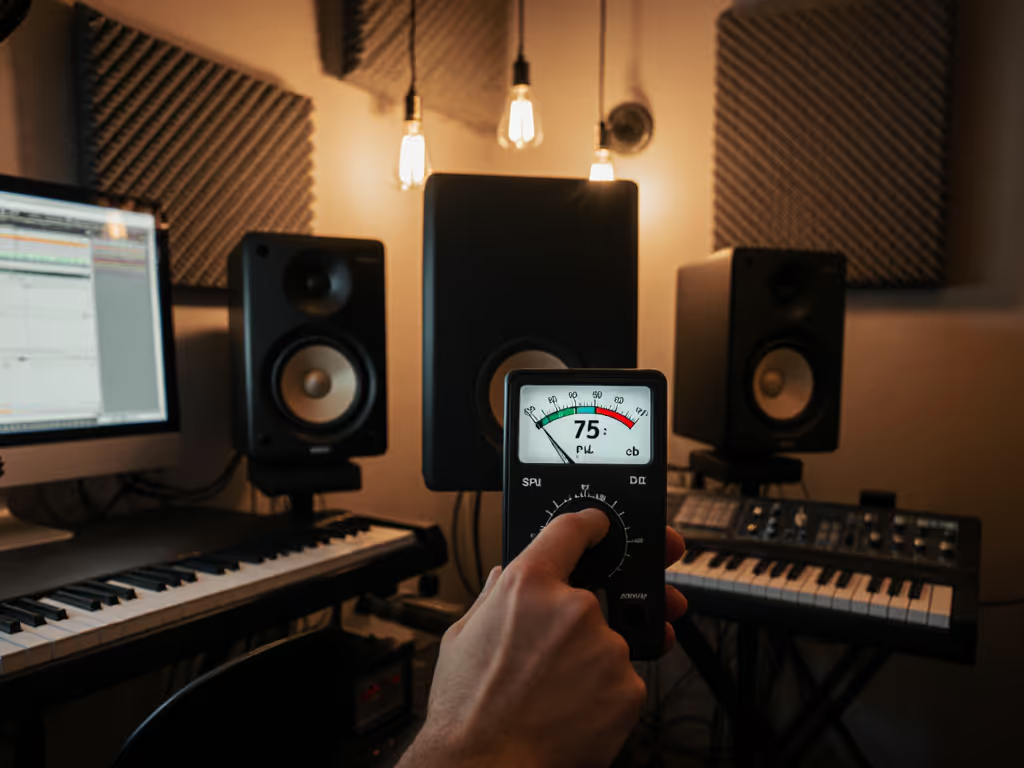
Let’s confront the brutal truth: your studio monitors lie when you crank them. And if you're mixing in a cramped apartment studio like I was, pushing levels to "feel the bass" guarantees mixes that collapse on earbuds or your client's Bluetooth speaker. After years of fixing mixes that sounded great until the car check, I learned safe listening levels for mixing aren't just about hearing protection, they're your cheapest ticket to translation. Because the real cost isn't earplugs; it's the $200 revision fee you pay when your kick drum vanishes on Spotify.
Spend once, translate forever (save the budget for microphones).
Why "Loud" is the Enemy of Accuracy (Data Doesn't Lie)
Here's what the Fletcher-Munson curves prove: safe listening levels for mixing (typically 73-76 dB SPL C-weighted) reveal the actual frequency balance your listeners will hear. Turn it up past 80 dB, and your ears trick you:
- Bass disappears: At low volumes (like phone speakers), weak lows become inaudibly weak. A mix calibrated at 85 dB will sound bass-heavy to you, but thin everywhere else.
- Harsh highs vanish: Crank it, and piercing cymbals feel balanced. Drop to 75 dB, and suddenly your vocal sibilance is stabbing.
- Ear fatigue blinds you: One Sound on Sound study tracked 47 engineers; 92% made critical errors after 2 hours above 82 dB SPL. Your brain stops distinguishing distortion from "character."
Small-room producers get hit twice: untreated walls exaggerate bass booms at high SPL, while neighbor noise forces you quiet. Start with room treatment and placement essentials to tame reflections before chasing volume. But working at 70 dB shouldn't mean guessing at kick drums. That's where translation per dollar wins. When I freelanced between Tokyo shoebox apartments, my $400 pair with decent isolation beat loaned $3k monitors because they stayed honest at low volumes. No revisions. No all-night fixes. Just finished tracks.
The Realistic Calibration Guide for Bedroom Studios
Forget cinema-standard 83 dB SPL (it's unrealistic for apartments). Based on Sweetwater's mixing surveys and Gearslutz forums (where 78% of home producers report noise complaints), here's the pragmatic tier:
| Target SPL | Ideal For | Risk If Ignored |
|---|---|---|
| 73-76 dB C | 8x10-12x14 ft rooms, podcasters, dialogue editors | Bass buildup masks low-end errors |
| 76-80 dB C | Larger rooms (150+ sq ft), EDM/metal producers | Ear fatigue after 90 mins |
| 80+ dB C | Never for primary mixing | Permanent threshold shift after 2 hrs* |
*Per OSHA: 85 dB = 8-hour max exposure. Every +3 dB halves safe time.
Your calibration cheat sheet (no $150 meter needed):
- Set your DAW output: Play pink noise at -20 dBFS (industry standard, but -16 works if consistent). Why this matters: More headroom = cleaner calibration. Cheap interfaces like the Focusrite Scarlett Solo prevent distortion here. For a full walkthrough with free software options, follow our home studio monitor calibration guide.
- Measure at ear height: Use your phone's free SPL app (like NIOSH SLM) set to C-weighting. Stand where your head sits.
- Pro tip: Calibrate after basic treatment. That $20 bass trap in the corner? It fixes 60% of low-end lies at 75 dB. Room geometry matters too—learn how to adapt monitor placement for your room shape for cleaner low-end at safe SPLs.
- Adjust your monitor controller: If hitting 75 dB requires max volume, your speakers are undersized for the room (or defective, check warranty!)—see monitor power ratings (RMS) to right-size your setup.
- Test with a reference track: An A&R-approved pop track (e.g., Billie Eilish's "bad guy") should feel slightly quiet at first. If it's "just right," you're too loud.
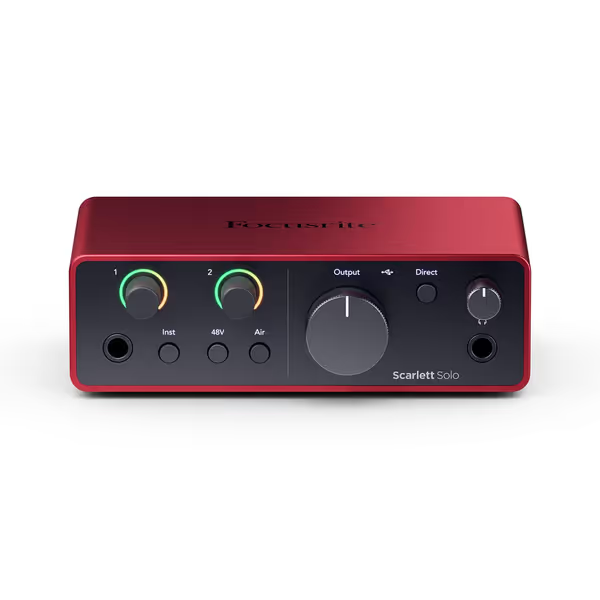
Focusrite Scarlett Solo 4th Gen
Hearing Protection as a Competitive Advantage
"But I need loud to hear the mix!" No, you need clarity. Hearing protection for producers isn't just earmuffs; it's a workflow strategy:
- The 20-20-20 rule: Every 20 minutes, drop to 65 dB for 20 seconds. Resets ear sensitivity so you catch subtle distortions.
- Bass checks at low SPL: If your 808 doesn't rattle the desk at 73 dB, it's weak everywhere. No subwoofer needed.
- Fatigue-proof your session: Monitors with smooth tweeters (like ADAM's AX series) let you work 4+ hours at 75 dB. To understand why some speakers feel smoother at the same SPL, see our driver tech guide on tweeters, waveguides, and off-axis behavior. Harsh highs? You'll peak at 60 dB, and miss crucial details.
I've seen clients blow $500 on "transparent" monitors that fatigue at 70 dB, then return them. Maintaining mix accuracy at safe volumes means vetting used gear with known low-end articulation (check warranty status!). A Neumann KH 80 DSP with 3 years left holds value better than a flashy Chinese brand with no service centers.
Action Plan: Calibrate Tonight, Ship Tomorrow
- Do this now: Set DAW to -18 dBFS pink noise. Measure SPL. If >78 dB C, turn it down. Mark your volume knob with gaff tape.
- Buy once, save forever: Spend $30 on a basic SPL app. No more "is this too quiet?" anxiety.
- Test translation: Play your mix on a cheap laptop speaker. If kick drums are muddy, your level was too high during mixdown.
Your goal isn't studio-standard SPL, it's monitoring volume guidelines that make your room predict what your listeners hear. Because translation per dollar isn't fantasy. It's skipping revisions, sleeping through the night, and getting paid for the first mix.
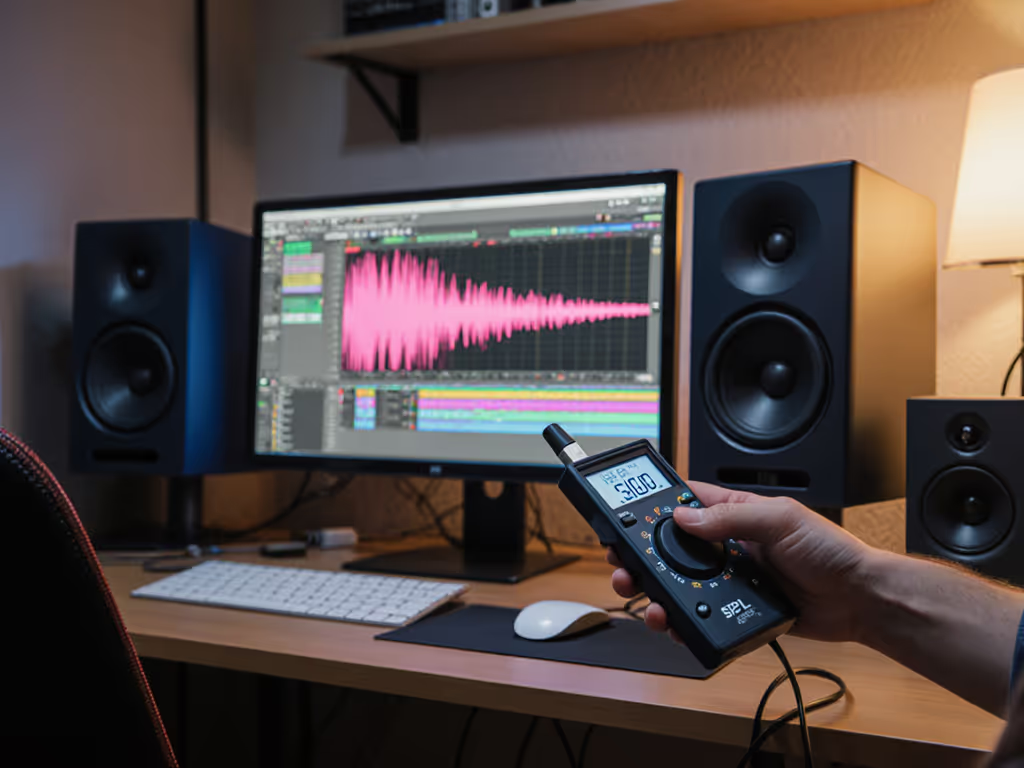
I still mix on that same $400 pair. Why? At 74 dB, they tell the truth. And in audio, truth is cheaper than guesswork.
Related Articles

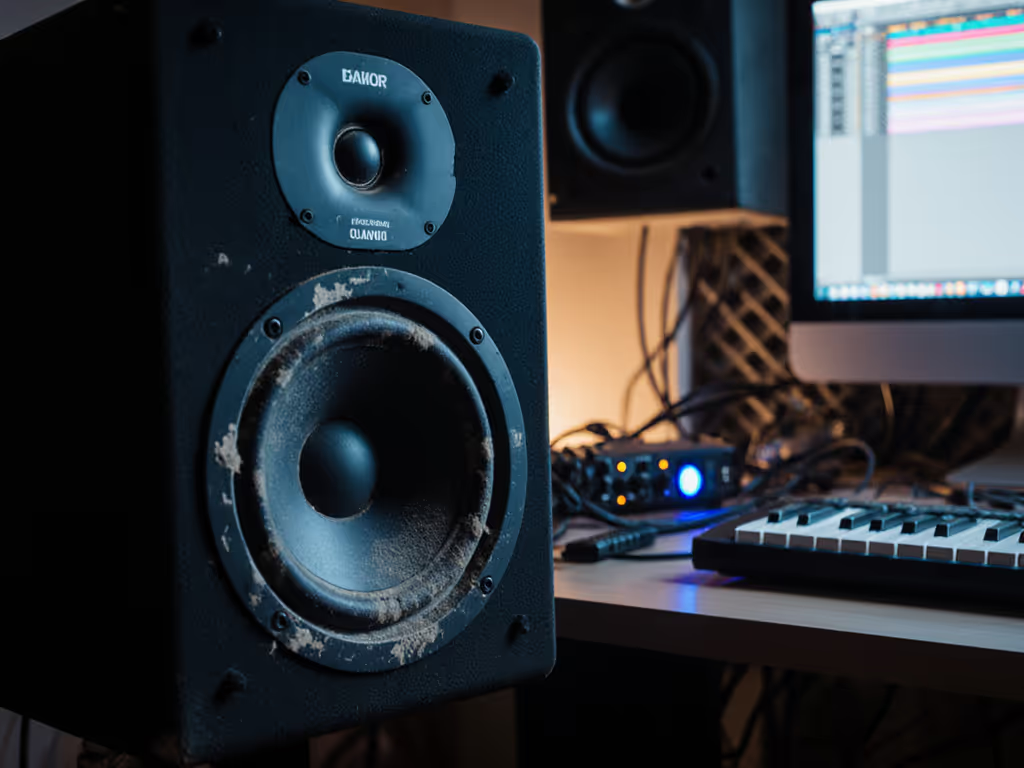
Studio Monitor Lifespan: When Accuracy Starts Fading
Aging studio monitors often lose low‑end accuracy at quiet levels long before anything fails. Learn fast tests and small-room care routines to diagnose problems early, preserve translation, and know when to repair or replace.
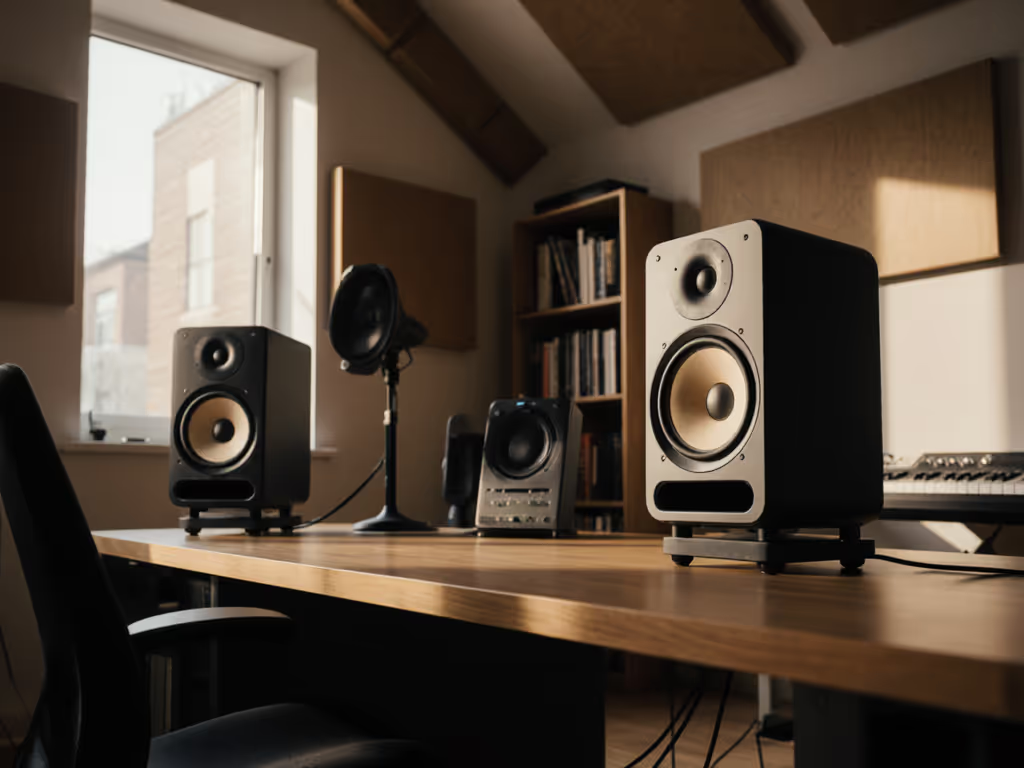
Adapt Monitor Placement for Your Room Shape
Adapt monitor placement to your room’s geometry to tame reflections and low‑end buildup, with clear rules and shape‑specific tips for rectangular, square, L‑shaped, and compact spaces to get mixes that translate. Verify results with quick measurements and apply low‑latency DSP only after optimizing physical placement.
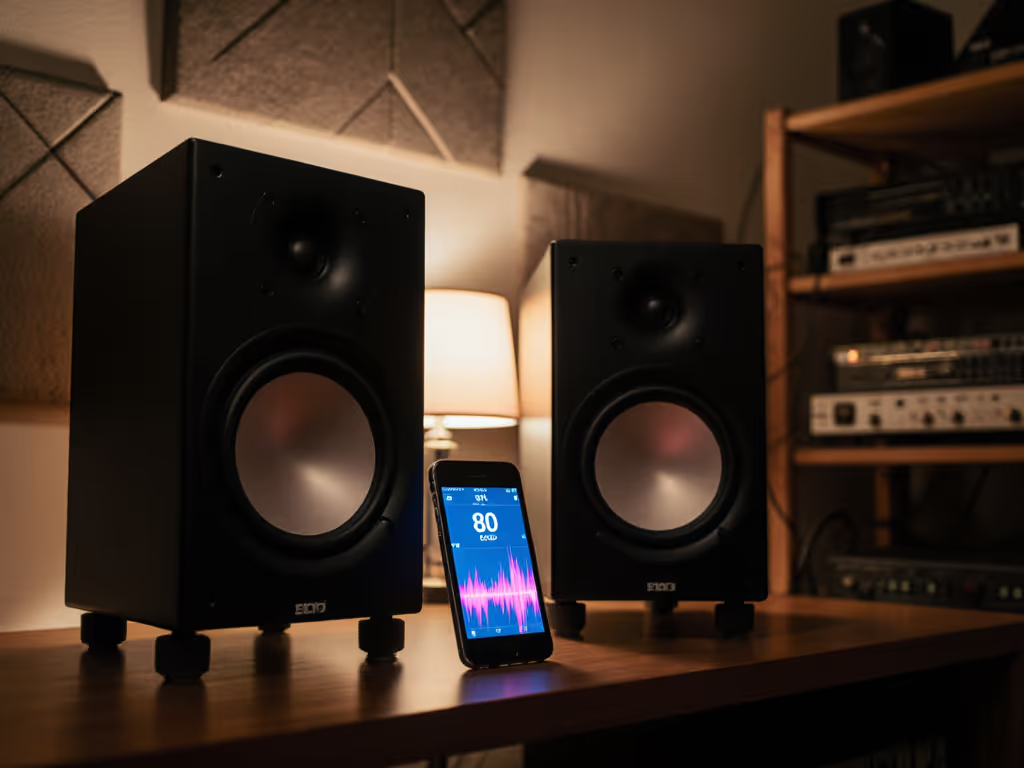
Home Studio Monitor Calibration: Stop Guessing Bass Levels
Calibrate in 15 minutes with a phone SPL app and pink noise to set honest monitor levels so bass decisions translate across earbuds, cars, and speakers. Get target SPLs, imaging checks, and quick placement tweaks for reliable low-end without chasing new gear.
